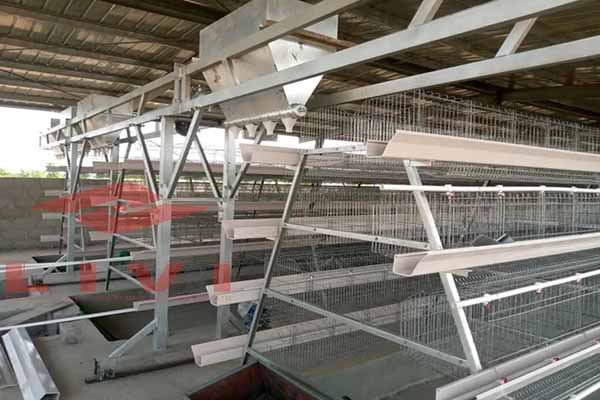Automatic Poultry Cage System for 50,000 Birds: A Comprehensive Guide
Time : 2025-07-04
The poultry industry has experienced significant advancements in technology, particularly in the area of automated systems. One such innovation is the Automatic Poultry Cage System designed for housing up to 50,000 birds. This article provides a comprehensive guide to the features, benefits, and considerations of implementing an automatic poultry cage system for large-scale poultry farming.
Introduction to Automatic Poultry Cage Systems
An automatic poultry cage system is a sophisticated, automated system designed to house and manage a large number of birds efficiently. These systems are tailored to cater to the specific needs of poultry, such as laying hens, broilers, and turkeys. The primary goal of an automatic poultry cage system is to enhance productivity, ensure animal welfare, and reduce labor costs.
The system typically consists of several components, including:
– Poultry cages: These are the primary housing units for the birds, designed to provide comfort, security, and easy access for feeding, watering, and health monitoring.
– Automated feeding systems: These systems provide precise and consistent feeding to the birds, ensuring optimal growth and health.
– Automated watering systems: These systems ensure the birds have constant access to fresh water, a critical factor for their health and productivity.
– Environmental control systems: These systems maintain optimal temperature, humidity, and air quality within the housing units.
– Monitoring and data collection systems: These systems collect and analyze data on bird health, behavior, and production, enabling farmers to make informed decisions.
Benefits of an Automatic Poultry Cage System for 50,000 Birds
Implementing an automatic poultry cage system for 50,000 birds offers several benefits:
1. Increased Productivity: The automated systems streamline various processes, resulting in higher productivity. For instance, automated feeding and watering systems ensure consistent and timely delivery of nutrients and water, promoting optimal growth and health.
2. Enhanced Animal Welfare: The comfortable and secure environment provided by the poultry cages, along with regular monitoring, ensures the well-being of the birds.
3. Reduced Labor Costs: Automated systems minimize the need for manual labor, leading to significant cost savings in terms of wages and labor-related benefits.
4. Improved Egg Quality: The controlled environment and optimized feeding programs result in better egg quality, including higher shell strength and better internal quality.
5. Enhanced Biosecurity: The design of the poultry cages and the automated systems help in preventing the spread of diseases, thereby ensuring the health of the birds and reducing the risk of financial losses.
Designing an Automatic Poultry Cage System for 50,000 Birds
Designing an automatic poultry cage system for 50,000 birds requires careful planning and consideration of several factors:
1. Space Requirements: Ensure that the facility is large enough to accommodate the 50,000 birds and all necessary components of the system.
2. Cage Design: Select a cage design that is suitable for the type of poultry you are raising. For example, laying hens require different cage dimensions compared to broilers.
3. Ventilation and Environmental Control: Ensure that the system includes an efficient ventilation system and environmental control mechanisms to maintain optimal temperature, humidity, and air quality.
4. Automated Systems: Choose high-quality, reliable automated systems for feeding, watering, and monitoring. Consider the scalability of the system to accommodate future expansions.
5. Energy Efficiency: Opt for energy-efficient systems to reduce operational costs and minimize the environmental impact.
Implementation and Maintenance
Once the automatic poultry cage system is designed and installed, it is crucial to implement and maintain it effectively:
1. Training: Train your staff on the operation and maintenance of the automated systems to ensure they can handle any issues that may arise.
2. Regular Maintenance: Schedule regular maintenance checks to identify and address any potential problems before they become significant issues.
3. Data Analysis: Monitor and analyze the data collected by the system to optimize the performance of the poultry farm and make informed decisions.
Conclusion
An automatic poultry cage system for 50,000 birds is a valuable investment for large-scale poultry farming. By streamlining processes, enhancing animal welfare, and reducing labor costs, these systems can significantly improve the productivity and profitability of poultry operations. Careful planning, implementation, and maintenance are essential to ensure the success of the system.












